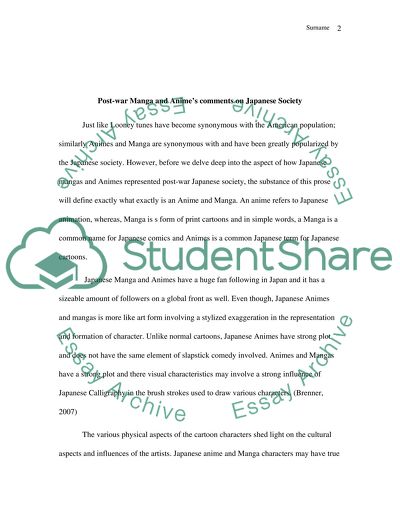Cite this document
(“Post-war Manga and Animes comments on Japanese Society Essay”, n.d.)
Retrieved from https://studentshare.org/environmental-studies/1417184-post-war-manga-and-animes-comments-on-japanese-society
Retrieved from https://studentshare.org/environmental-studies/1417184-post-war-manga-and-animes-comments-on-japanese-society
(Post-War Manga and Animes Comments on Japanese Society Essay)
https://studentshare.org/environmental-studies/1417184-post-war-manga-and-animes-comments-on-japanese-society.
https://studentshare.org/environmental-studies/1417184-post-war-manga-and-animes-comments-on-japanese-society.
“Post-War Manga and Animes Comments on Japanese Society Essay”, n.d. https://studentshare.org/environmental-studies/1417184-post-war-manga-and-animes-comments-on-japanese-society.


